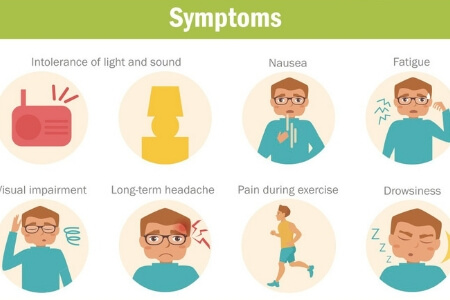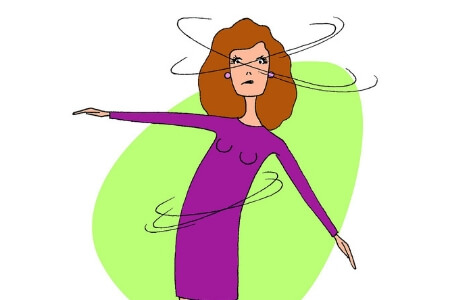- Home
- Migraine Symptoms
- Symptoms of Migraine
COMPLETE MAGNESIUM SUPPORT
My Top Choice - Magnesium Breakthrough - The ONLY supplement with all 7 essential magnesium types in one formula. Most only have 1-2 types, leaving you deficient.
Taboo Symptoms of Migraine: Anger
Did you know that anger is one of the symptoms of migraine? You will often read that mood swings can be a symptom, but rarely is anger listed.
Anger and rage are kind of taboo subjects. The words are often used as the same, when they are not. Kind of like headache and migraine. Both are normal human emotions, but this is a huge topic, so let's just look at how it all links to migraine and I'll share some management tips below on how to be proactive instead of reactive.
The most common symptoms of migraine are blurred vision, cold hands and feet, hot flushes, slurred speech, being oversensitive to smells and noise, tiredness and fatigue, dizziness, confusion, nausea, increased pulse, runny nose, and watering eyes.
Rarely will you see anger listed.
But I can assure you that if you get chronic migraine headaches, you will experience a Dr. Jekyll and Mr. Hyde effect at one time or another! One minute you are your old self, and a few minutes later everything is irritating you. Sometimes you will find yourself yelling, ranting and raving about the injustices of the world. Ok... that might just be me. But you get the picture.
Learning some anger management skills could be a great way to learn how to better express yourself appropriately and deal with some of the more challenging symptoms of migraine.
Life brings with it great
challenges and it's impossible not to get angry in some cases, at some
people, or at some situations - like constant or repetitive pain and
migraines - sometimes.
Anyone can become angry – that is so easy. But to become angry with the right person, to the right degree, at the right time, for the right purpose, and in the right way – that is not so easy.
~ Aristotle
The first time I read about emotions being an early warning signal was in Migraines for Dummies where the authors refer to “some migraine sufferers experience a personality switcheroo, showing three (or thirty) faces of Eve, and exhibiting raw and rugged personality traits”.
They mention feeling irritable and having an evil twin and make a point of telling the reader to give the migraine sufferer space and know that it will end when the headache phase ends.
So, you may not like the way you feel so emotional before, during and after your migraine episode. You may not like the way you act either. You may experience agitation, impatience, irritability, edginess, and any combination of those in the throes of an attack.
My advice is to be kind to yourself and give yourself permission to have a TIME OUT away from others, so you don’t need to show them your Jekyll and Hyde personalities.
I've written more about that here >> Anger Management for People Living with Migraine.
My #1 Choice in Magnesium Supplements
3 Ways to Help Tame Your Anger
1. Form Healthy Boundaries
Forming healthy boundaries will look like this:
- You can say no without experiencing the weight of guilt.
- You act on your feelings when you need to. For example, saying – "I’m not sure. I will have to get back to you on that."
- You are able to do what you need to do independent of the suggestions of others.
- You no longer take the blame for every problem in your relationships and friendships.
- You realize you are not responsible for others actions.
- You realize it is not your job to make others happy or make relationships work.
- You stop taking things personally. You recognize that an others behavior is more based on their past history than something lacking in you.
- You are able to maintain friendships even when you have a disagreement.
- You feel comfortable and maintain inner peace in both receiving and giving.
Here are some practical examples:
- "No."
- "No thank you."
- "I am not sure about that; can I get back to you?"
- "I’d rather not talk about that right now."
- "I can help you with X, but I can’t help you with XYZ."
- "I hear what you are saying, but I see it a little differently, and that’s ok."
- "I will need you to get back to me by..." (name a deadline).
- And an oldie but a goodie – "I felt X, when you said Y." Or – "I felt X, when you did Y."
Forming new healthier boundaries can be added to your anger
management strategy to help you articulate what you need and let
others know your limitations.
Also, learning when anger is one of your symptoms of migraine will help you know to act fast and take your steps to abort the attack.
My husband actually noticed it long before I read about it. He would just say during my hissy fit, "hey, I think you are getting a migraine again." It turned out, he was almost always right. For more help with this I can recommend my meditation course, here's the link.
2. Aggressive, Passive, and Assertive Communication Styles
Aggressive
An aggressive communication style is when you express your opinion in a way that violates, humiliates, offends or insults the rights of others. Sarcasm and insults are good examples.
The need to be right, the need to win that force the other person to be wrong or loose is a basic power struggle.
The goal is to win meaning someone has to lose.
This is what I want and what you want is just not important.
Passive
Non-assertive or passive communication style is when you give in
to others without any regard for yourself. You give in to other
people’s demands, or ideas and opinions whilst failing to recognize what
you feel or what your own ideas or opinions are.
In a way you are permitting those around you to infringe on you by failing to express your honest feelings, thoughts and beliefs. If you then try to express your feelings in a fearful apologetic or self effacing manger, you may find that others disregard them. Your underlying message received is I don’t count.
The goal is to avoid conflict at all costs.
What I want doesn’t count.
Assertive
An assertive communication style involves expressing your thoughts and beliefs in appropriate ways that do not dominate or degrade others. Standing up for yourself with the respect and consideration of the other person.
The goal is communication, respect, fair play, and compromise when the needs and rights conflict.
This is what I need, what do you need? Let’s see if we can find something in the middle that works for us both.
Changing your style of communication can add to your anger management strategy and help you learn to express yourself appropriately instead of just getting angry. You will benefit greatly from learning more skills if anger is one of your early warning symptoms of migraine attacks.
LEARN TO RELAX
MIGRAINE PAIN MANAGEMENT COURSE
I have guided meditations for migraine reduction in my course. It's free to enroll so you can learn to manage pain and symptoms right now... continue reading
3. Be Proactive Not Reactive
We all know with migraines that triggers cause a biological chain reaction of events. Well, your emotions also get triggered and cause you to react. The instinct to fly off the handle is innate (well in my family it is). But there are other options when anger becomes one of your more regular symptoms of migraine.
When you are triggered, you can take a deep breath and a time out if you need and you can then to choose to respond.
Pause - take a deep breath - and step away from the irritant!
When you first feel the physical expression that is your anger, and everyone is different to some degree, it’s time to take care of yourself. So you might feel: your heart pounding, neck tension, a knot in your stomach, shaking or sweating. These are signals for your body to kick into fight or flight.
This is the time to pause. Take a few deep breaths and go somewhere to regroup your thoughts to see what it is that you are actually angry about, or if it feels like a migraine trigger.
This is one of the harder symptoms of migraine to detect because it's just hard to tell that you are not just plain angry at something.
Check out my course to give you more ideas on dealing with anger and ways to manage it better.
More Help for Nasty Symptoms of Migraine
For more help with anger symptoms of migraines, besides taking your medications early, I can recommend all of these, they work for me:
- Use mindfulness to increase your own body awareness.
- Get extra emotional support. Getting professional counselling was one of the best things I have ever done, and it even evolved into me becoming a professional counselor.
- Read my eBook Migraine Management and check out my Migraine Pain Management Course, you can enroll for free.
If you struggle with the anger that comes up around your migraines, please check out my course. There is a whole section on immediate self help where you can choose some different therapeutic activities to help you calm the chaos.
Until next time, be well, and may your toughest days be met with comfort and care. Keep going - you are stronger than you know.
~ Holly, Migraine Savvy
WANT MORE TIPS? Subscribe to my newsletter and follow along on Facebook and Pinterest for all of the latest updates.
MIGRAINE SYMPTOMS Related Articles
How to be more MIGRAINE SAVVY right now...
Symptoms of Migraine References:
1. Stafford, D. and Shoquist, J. MD. (2003) Migraines for Dummies. Wiley Publishing, Inc: New York.
2. Halford, W.K. And Markman, H.J. (ed.) (1997) Clinical Handbook of Marriage and Couples Intervention. John Wiley & Sons Ltd.: England.
3. Heyman, R and Neidig, P. (Chapter 23) Physical Aggression Couples Treatment. In Halford, W.K. And Markman, H.J. (ed.) (1997) Clinical Handbook of Marriage and Couples Intervention. John Wiley & Sons Ltd.: England.













